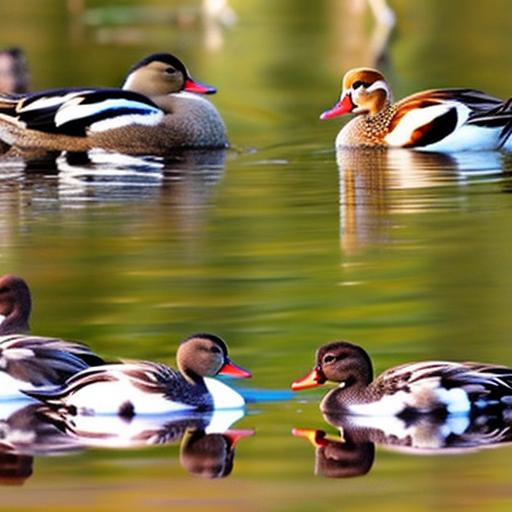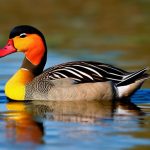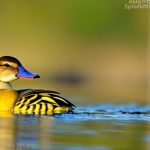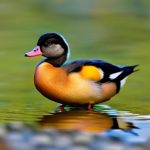Duck breeds are a diverse group of birds that have been domesticated for various purposes. They are important for their meat, eggs, feathers, and even as pets. Duck breeds come in different sizes, colors, and shapes, each with its own unique characteristics. Some of the most popular duck breeds include the Pekin, Muscovy, and Mallard.
Key Takeaways
- There are many different breeds of ducks, each with their own unique characteristics and uses.
- The most popular duck breeds include the Pekin, Muscovy, and Mallard.
- Rare and endangered duck breeds, such as the Cayuga and Silver Appleyard, require special attention and conservation efforts.
- Domestic duck breeds are typically raised for meat and eggs, while wild duck breeds are found in their natural habitats.
- The history and evolution of duck breeds can be traced back thousands of years, with many breeds originating in Asia.
- Different duck breeds have unique physical and behavioral traits, such as the Indian Runner’s upright posture and the Khaki Campbell’s excellent egg-laying abilities.
- Duck breeds play an important role in agriculture, providing meat, eggs, and pest control services.
- When choosing a duck breed, consider factors such as temperament, egg-laying abilities, and intended use.
- Caring for ducks involves providing them with proper housing, nutrition, and veterinary care.
- Stunning pictures of duck breeds from around the world showcase the beauty and diversity of these fascinating birds.
The Most Popular Duck Breeds
The Pekin duck is one of the most popular duck breeds in the world. It is known for its large size and white feathers. Pekin ducks are primarily raised for their meat, as they have a tender and flavorful flesh. They are also good egg layers, producing around 200-300 eggs per year. Pekin ducks are docile and easy to handle, making them a popular choice for backyard farmers.
Muscovy ducks are another popular breed known for their unique appearance. They have a distinctive red face and caruncles, which are fleshy growths on their face and neck. Muscovy ducks are larger than most other duck breeds and have a leaner meat. They are also excellent foragers and can help control pests in the garden. Muscovy ducks are often kept as pets or for their meat and eggs.
The Mallard is a wild duck breed that is also commonly kept in domestic settings. It is known for its beautiful green head and colorful feathers. Mallards are versatile birds that can adapt to different environments and climates. They are often used in crossbreeding programs to create new duck breeds with desirable traits.
Rare and Endangered Duck Breeds
While some duck breeds are popular and widely available, there are also rare and endangered duck breeds that need to be preserved. These breeds often have unique characteristics or historical significance that make them valuable to conservation efforts.
The Cayuga duck is one such rare breed. It is named after Cayuga Lake in New York, where it was first developed. Cayuga ducks have beautiful black feathers that shimmer with a greenish hue in the sunlight. They are known for their calm and friendly temperament, making them popular as pets. However, the Cayuga duck population has declined in recent years, and efforts are being made to preserve this unique breed.
The Silver Appleyard is another rare duck breed that is at risk of extinction. It was developed in the 1930s by Reginald Appleyard in England. Silver Appleyard ducks are known for their striking appearance, with silver and white feathers and a distinctive upright stance. They are good egg layers and have a calm and friendly temperament. Conservation efforts are underway to protect the Silver Appleyard breed and ensure its survival.
Domestic vs. Wild Duck Breeds
Domestic duck breeds have been selectively bred over generations for specific traits such as meat production, egg-laying ability, or ornamental features. They are typically raised in controlled environments and have been adapted to thrive in captivity.
Wild duck breeds, on the other hand, are not domesticated and live in their natural habitats. They have not been selectively bred for specific traits and retain their natural instincts and behaviors. Wild ducks are often migratory birds that travel long distances during certain times of the year.
There are also hybrid duck breeds that are a mix of domestic and wild ducks. These hybrids often have a combination of traits from both parent breeds.
The History and Evolution of Duck Breeds
The history of duck breeds dates back thousands of years. Ducks were first domesticated in East Asia, particularly in China and Egypt, where they were raised for their meat and eggs. Over time, different breeds were developed with specific traits to suit different purposes.
Selective breeding played a significant role in the evolution of duck breeds. Breeders would choose ducks with desirable traits, such as larger size or better egg-laying ability, and breed them together to produce offspring with those traits. This process was repeated over generations, resulting in the development of distinct duck breeds.
In recent years, there has been a growing interest in preserving and conserving rare and endangered duck breeds. Efforts are being made to maintain genetic diversity and prevent the loss of unique traits that these breeds possess.
Unique Characteristics of Different Duck Breeds

One of the fascinating aspects of duck breeds is their wide range of unique characteristics. Each breed has its own distinct appearance, size, and coloration.
For example, the Indian Runner duck is known for its upright stance and slender body. It has a distinctive walking style, with a forward-leaning posture that resembles a runner in motion. Indian Runner ducks come in various colors, including white, black, fawn, and chocolate.
The Rouen duck is another breed with unique characteristics. It closely resembles the Mallard in appearance but is larger in size. Rouen ducks have beautiful green heads and brown feathers with intricate patterns. They are primarily raised for their meat but are also popular as ornamental birds.
The Importance of Duck Breeds in Agriculture
Duck breeds play a crucial role in agriculture. They are valuable for their meat, eggs, feathers, and even manure.
Duck meat is lean and flavorful, making it a popular choice for many cuisines around the world. Ducks are also good egg layers, producing nutritious eggs that are rich in protein and other essential nutrients. Duck feathers are used in various industries, including fashion and bedding.
In addition to their products, ducks also provide other benefits to farmers. They are excellent foragers and can help control pests in the garden by eating insects and snails. Ducks also produce manure that can be used as fertilizer for crops.
How to Choose the Right Duck Breed for Your Needs
When choosing a duck breed, there are several factors to consider. First, determine your purpose for raising ducks. Are you primarily interested in meat production, egg-laying, or ornamental purposes? Different breeds have different strengths and characteristics that make them suitable for specific purposes.
Consider the climate and environment in which you will be raising the ducks. Some breeds are better suited to cold climates, while others thrive in warmer regions. It’s important to choose a breed that can adapt to your local conditions.
Also, consider the space and resources you have available. Some duck breeds require more space and may need access to water for swimming. Others can be raised in smaller enclosures or even indoors.
Lastly, consider the temperament and behavior of the breed. Some ducks are more docile and friendly, while others may be more independent or flighty. Choose a breed that matches your preferences and level of experience with raising ducks.
Caring for Duck Breeds: Tips and Tricks
Caring for duck breeds requires proper housing, feeding, and healthcare. Here are some tips and tricks to ensure the well-being of your ducks:
1. Housing: Ducks need a safe and secure shelter to protect them from predators and harsh weather conditions. Provide a clean and dry environment with enough space for the ducks to move around comfortably. Ducks also need access to water for swimming and cleaning themselves.
2. Feeding: Ducks have specific dietary needs and require a balanced diet to stay healthy. Feed them a commercial duck feed that is formulated to meet their nutritional requirements. You can also supplement their diet with fresh fruits, vegetables, and insects.
3. Water: Ducks need access to clean water at all times. They use water for drinking, bathing, and cleaning their feathers. Provide a shallow container or pond where they can swim and dip their heads.
4. Healthcare: Regularly check your ducks for signs of illness or injury. Provide them with appropriate vaccinations and deworming treatments. Consult a veterinarian if you notice any health issues or abnormalities.
5. Socialization: Ducks are social animals and thrive in the company of other ducks. It’s best to keep them in small groups or pairs to prevent loneliness and stress.
Stunning Pictures of Duck Breeds from Around the World
Duck breeds come in a wide range of colors, patterns, and sizes, making them a visually stunning group of birds. Here are some pictures showcasing the beauty and diversity of duck breeds from around the world:
[Include a selection of high-quality images of different duck breeds, such as Pekin, Muscovy, Mallard, Cayuga, Silver Appleyard, Indian Runner, and Rouen ducks.]
Duck breeds are an important part of agriculture and provide various benefits to farmers and enthusiasts alike. They come in different sizes, colors, and shapes, each with its own unique characteristics. From popular breeds like the Pekin and Muscovy to rare and endangered breeds like the Cayuga and Silver Appleyard, there is a wide variety to choose from.
Understanding the history and evolution of duck breeds helps us appreciate their significance and the efforts being made to preserve rare breeds. Whether you’re interested in raising ducks for meat, eggs, or as pets, there is a breed that suits your needs. By providing proper care and attention, you can enjoy the beauty and diversity of duck breeds while reaping the benefits they offer.
If you’re interested in duck breeds and want to learn more about them, you might also enjoy reading an article on Poultry Wizard about the best chicken coops for keeping ducks. This article provides valuable insights into choosing the right coop for your ducks, ensuring their safety and comfort. Check it out here to discover how to create the perfect home for your feathered friends.
FAQs
What are duck breeds?
Duck breeds refer to the different types of ducks that exist, each with unique physical and behavioral characteristics.
How many duck breeds are there?
There are over 100 different duck breeds recognized worldwide.
What are some common duck breeds?
Some common duck breeds include the Pekin, Mallard, Muscovy, Rouen, and Khaki Campbell.
What are some rare duck breeds?
Some rare duck breeds include the Silver Appleyard, Saxony, Ancona, and Magpie.
What are the differences between duck breeds?
Duck breeds differ in size, color, feather patterns, temperament, and egg-laying abilities.
What are some uses for duck breeds?
Duck breeds can be used for meat, eggs, feathers, and as pets or ornamental birds.
What are some considerations when choosing a duck breed?
Considerations when choosing a duck breed include climate, space requirements, egg-laying abilities, and temperament.
Where can I find pictures of different duck breeds?
Pictures of different duck breeds can be found online through various websites and search engines.
Meet Walter, the feathered-friend fanatic of Florida! Nestled in the sunshine state, Walter struts through life with his feathered companions, clucking his way to happiness. With a coop that’s fancier than a five-star hotel, he’s the Don Juan of the chicken world. When he’s not teaching his hens to do the cha-cha, you’ll find him in a heated debate with his prized rooster, Sir Clucks-a-Lot. Walter’s poultry passion is no yolk; he’s the sunny-side-up guy you never knew you needed in your flock of friends!







